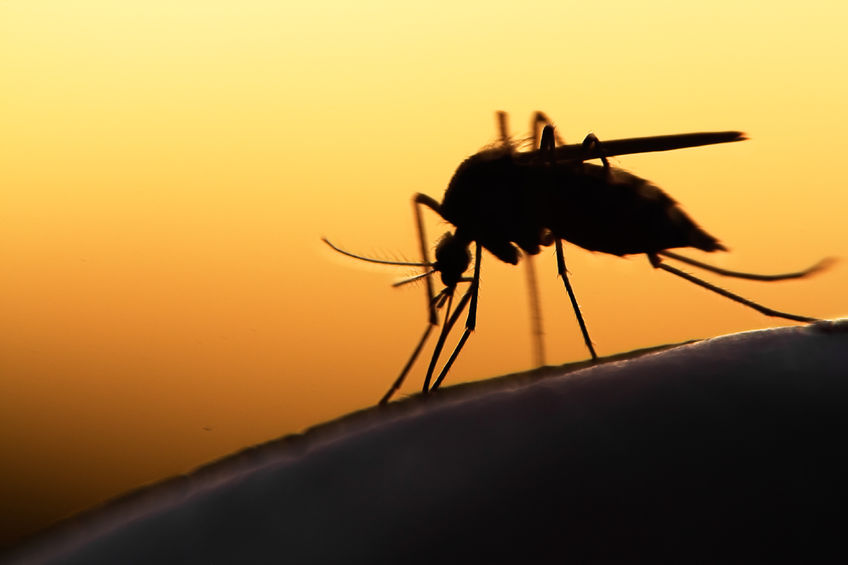Malaria is one of the most devastating parasite diseases in tropical and subtropical regions of the world. It affects more than 100 countries. The World Health Organization estimated that in 2016, 216 million cases occurred worldwide which was down from 237 million cases in 2010. The African continent accounted or 90% of the cases. Nearly half a million died in 2016
Extensive scientific information and experimental research contradict the claim that malaria will expand across the globe and intensify as a result of Carbon Dioxide induced warming. An historical analysis of malaria trends reveals this disease was an important cause of illness and death in England during a period of colder than present temperatures. This was throughout the Little Ice Age between the 14th and 18th centuries. It’s transmission began to decline only in the nineteenth century during a warming phase. Clearly there are other factors at work that are more important than temperature such as public health services, public awareness and insecticides.
The fear mongering predictions of increased malaria are based on mathematical models known to consider very few variables that have no scientific support yet are widely publicized by a media prone to distort all fears connected to human caused climate change.
As far back as the year 2000 Rogers and Randolph employed five climate variables over a wide range of geographic areas to predict no measurable increase in malaria resulting from moderate warming and a decline that would result from excessive warming.
Hay et al. In 2002 investigated long term trends in meteorological data at four East African highland sites that experienced significant increases in malaria cases over the past couple of decades. They reported on “temperature, rainfall, vapor pressure and the number of months suitable for parasite transmission have not changed significantly during the past century during the period of malaria resurgence”, proving these weather factors could not be responsible for the increases in malaria.
In 2003 Small et al. examined trends in a Climate driven model of malaria transmission from 1911 to 1995 where malaria rates had changed significantly in a variety of African locations without a relationship with climatic factors.
In 2006 Childs et al. presented a detailed analysis of malaria incidence in northern Thailand based on monthly records from 1977 to 2002 of total malaria cases in the country’s northern provinces. While the IPCC claimed the world warmed to a unprecedented level, malaria declined at a near constant rate of 6.45% per year.
In 2009 Hulden and Hulden studied the years between 1750 and 2008 of malaria incidence in Finland and could find no relationship with climate changes.
In 2010 Jackson et al. linked reported malaria cases and deaths from the years 1996 to 2006 for 10 countries in Western Africa including Benin, Burkina Faso, Côte d’Ivoire, Gambia, Ghana, Liberia, Mali, Senegal, Sierra Leone and Togo, with corresponding climate data from the U.S. National Oceanic and Atmospheric Administration’s National Climatic Data Center. They searched for transitive relationships between the weather variables and malaria rates via spatial regression analysis and tests for correlation. That is very sophisticated statistical analyses which once again found nothing to support IPCC scare claims.
Similarly, in 2011 Stern et al. examined trends in temperature and malaria for the Highlands of East Africa which span Rwanda, Burundi, and parts of Kenya, Tanzania and Uganda to resolve controversies over whether the area has warmed and malaria has become more prevalent. They report what while the temperature had increased significantly during their study period malaria rates declined. It would appear that the IPCC is not only wrong they have it backward.
Finally in 2016 Zhao et al. analyzed nine factors that could affect malaria incidence in Europe in the twentieth century, three of which were climate related. They found changes in climate to run counter to observed trends in malaria, proving again the complete fraud of the scare continuously perpetrated on nations around the world by the IPCC as to claimed malaria increases if we do not stop man caused global warming resulting from the use of carbon based fuels. I hope every one of our readers will take this to heart and share it with friends and colleagues when he topic of climate change arises.
Note: Portions of this article were excerpted from Climate Change Reconsidered II: Fossil Fuels, produced by the Nongovernmental International Panel on Climate Change (NIPCC), published by The Heartland Institute, with permission of the editors Joseph Bast and Diane Bast. The author strongly recommends the book for a complete expose of the fallacies behind the Climate Delusion.
References
Childs, D.Z.,Cattadori, I.M..Suwonkerd,W.,Prajakwong,S., and Boots,M. 2006. Spatiotemporal patterns of malaria incidence in Northern Thailand. Transactions of the ROyal Society of Tropical Medicine and Hygiene 100:623-31
Hay,S.I., J. Rogers, D.J., Randolph, S.E. Stern, D.I., Shanks, G.D., Myers, M.F. And Snow, R.W. 2002a. Climate change and the resurgence of malaria in East African Highlands. Nature 415:905-9
Hulden and Hulden, L. 2009. The decline of malaria in Finland — the impact of the vector and social variables. MKalaria Journal 8:94
Jackson, M.C., Johansson,L/, Furlong, C., Colton. A., and
Steelers, K.F. 2010. Modeling the effect of climate change on prevalence of malaria in Western Africa. Statistics Neerlandica 64:388-400.
Rogers, D.J. And Randolph, S.E. 2000. The global spread of malaria in a future, warmer world.Science 289:1763-6
Small, J., Goetz, S.J. And Hay H.I. 2003. Climatic suitability for malaria transmission in Africa, 1911-1995. Proceedings of the National Academy of Sciences USA 100:15,341-5
Stern, D.J., Gething, P.W., Kabaria, C.W. Temperley, T.H., Noor, A.M.., Okiro, E.A.., Shanks, G.D., Snow, R.W.,and Hay, S.I. 2011. Temperature and malaria tends In Highland East Africa. PLosOne 6 (9): 10,1371/journal.pone.0024524
Zhao, X., Smith,D.L. And Tatum, A.J. 2016. Exploring the spatiotemporal drivers of malaria elimination in Europe. Malaria Journal 15: 122.
